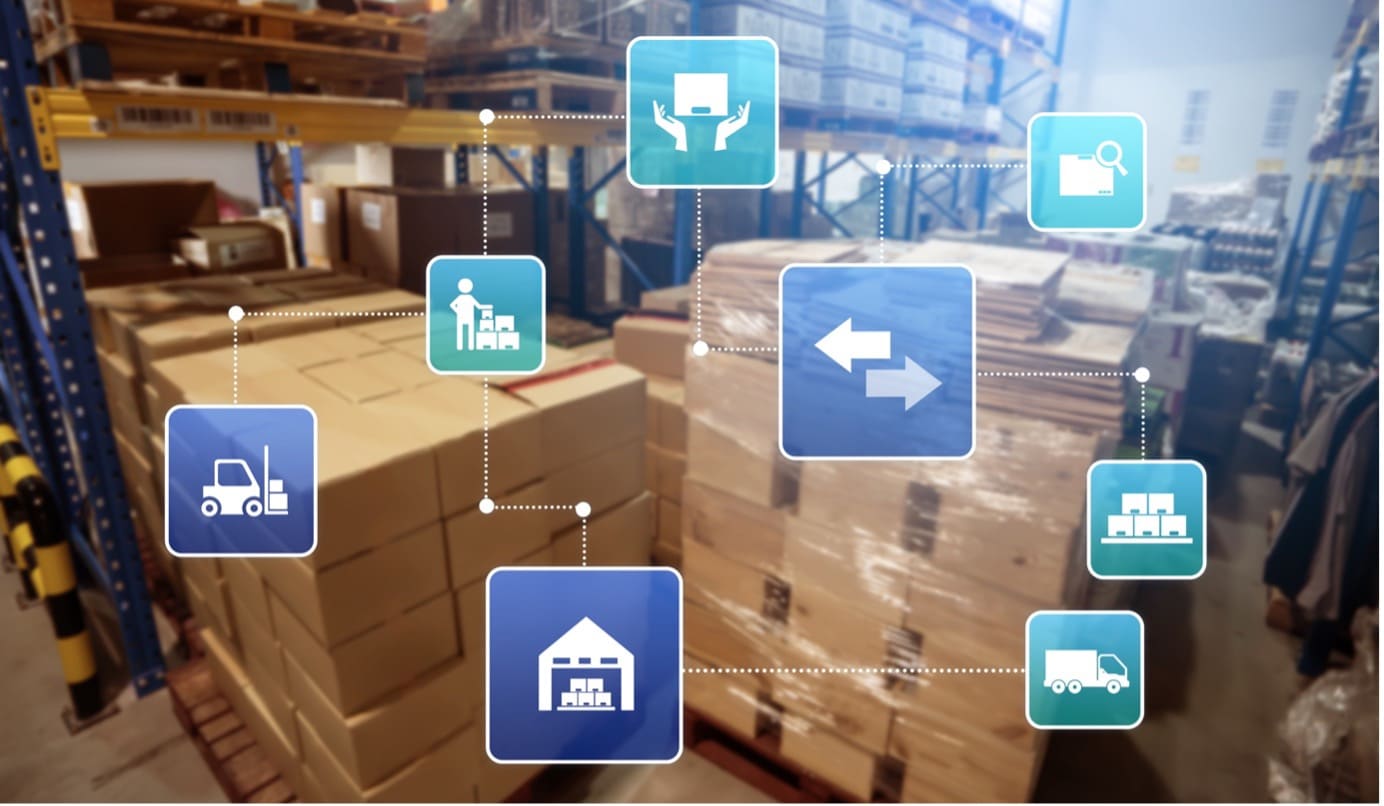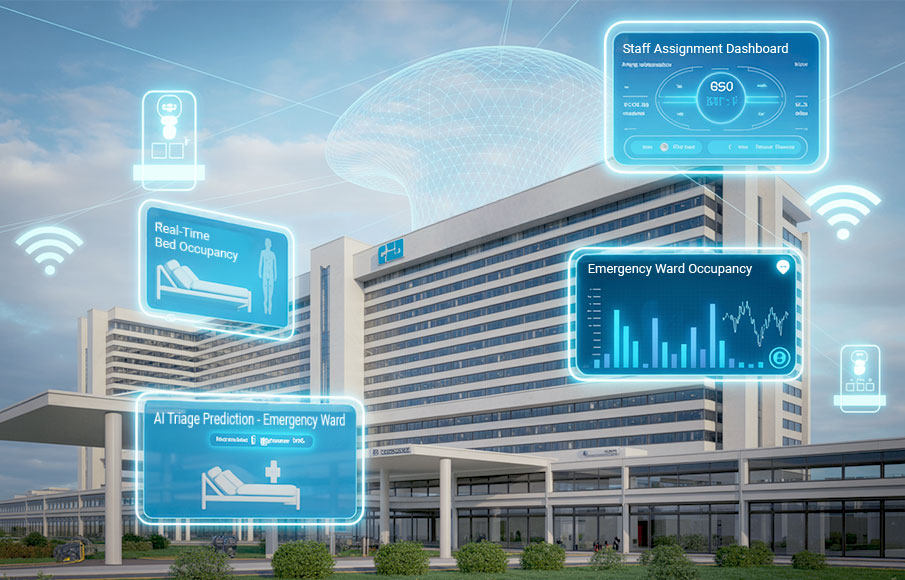LPWAN and LoRaWAN: IoT Connectivity Options Explained
- 21 February 2023

The Internet of Things (IoT) is a term that describes how everyday items are embedded with a computer processor and connected to the Internet. By doing so, we can gather new insights from the data generated from the “Things” to enable new functionalities.
Such solutions result in improved efficiency and are becoming increasingly popular, especially in developed countries where the aim is to become a smart nation. For example, Singapore has started using IoT technology to detect the presence of rats in hawker centres and markets. Another use of IoT devices is in smart farming. By deploying smart sensors and real-time technology which tracks any changes in greenhouses, this ensures optimal conditions for crop growth, urban agriculture is made easy and efficient.
To see results, technology vendors must consider which platform supports IoT connectivity best. The platform type is based on whether you are looking for short or long-range connectivity to support your IoT devices, amount of data and battery life.
This article will explore the benefits and applications of long-range connectivity to enable effective data communication. These networks are usually a combination of cellular networks such as 4G and 5G technologies and low-power wide area networks (LPWAN).
LPWAN vs LoRaWAN: How They Are Related
Low-power wide area networks (LPWANs) are a group of wireless communication technologies that use low-power transmitters. They are designed for connecting wireless IoT technology over long distances, linking sensors to a central operating system.
Several different types of LPWAN (Low-power wide area network) technology are available, including Sigfox, and the LoRaWAN communication protocol with an effective range of up to 20km and NB-IoT (Narrowband Internet of Things). However, before we delve into details, let’s look at the applications of LPWAN technologies.
Applications of LPWAN technologies

LPWANs are used in various environments, such as businesses, institutions, or even smart cities. LPWAN technology is commonly used in industries such as agriculture and manufacturing, where there is a need to monitor remote locations with low bandwidth and limited power resources.
It is also seen in smart cities that use IoT technology to power smart metering and lighting. For instance, it is reported that there is strong demand for LPWAN technology in cities to implement smart garbage disposal meters, digital monitoring of electricity and gas, and managing water networks.
Features of LPWAN

LPWANs offer several features that make them ideal for many applications. These include the ability to regulate transportation of small data packets, low power consumption and wide-area coverage. In addition, since most LPWAN devices have a range of up to several miles, they are used in various applications, including monitoring assets such as vehicles or pipelines, monitoring temperature or humidity levels in remote locations, or connecting devices in remote areas to the internet.
A major advantage of LPWANs is that their lightweight protocols reduce complexity and cost. Due to its reliance on battery-powered, inexpensive components and license-free or already owned licensed bands, they help to reduce network costs.
LPWAN devices also have incredibly long battery lives; some devices can last up to 10 years on one charge. Power consumption is also very low as devices consume minimal power when not transmitting.
Finally, because they operate over large geographical areas using unlicensed frequencies, LPWANs have broad coverage areas that allow users to share data over long distances in rural situations and even penetrate through walls, trees, and other structures along the propagation path while bending farther around solid obstacles. This makes them ideal for conditions where multiple transmitters may be operating simultaneously within proximity. It also makes them suitable for effective data communication in underground and indoor locations.
What are the available LPWAN options?

There are several different LPWAN options for IoT connectivity. Here are the ones commonly available and deployed in the LPWAN market.
One of the widely deployed LPWAN technologies is Sigfox, which runs over a public network in the 868 MHz or 902 MHz bands. It transmits very small packet size of up to 12 bytes at low data rate of 100bps enabling it to cover large distance and long battery life.
LoRaWAN (Long Range Wide Area Network), specified and backed by the LoRa Alliance, is also deployed in more than 140 geographies and supported by a large ecosystem of sensor manufacturers. It employs a more interference resistant spread spectrum transmission and can send packets up to 230 bytes at data rate up to 50kbps.
Finally, there is Narrowband-IoT (NB-IoT) and LTE-M, which are both 3rd Generation Partnership Project (3GPP) standards that operate on existing cellular infrastructure using licensed spectrum.
Several other LPWAN technologies exist in the market. Generally, LPWAN network operators enable long-distance communications over far distances. In addition, their low power consumption and more affordable device costs also mean better power efficiency at a lower cost.
However, there are also certain disadvantages. While LPWAN technology varies, some drawbacks are that since it communicates over a free radio spectrum (except NB-IOT), other devices operating on the same frequency can clog the network and hamper data transmission. In addition, cellular LPWAN cannot transfer data frequently and in large volumes.
To address that, LoRaWAN transmits in several sub-gigahertz frequencies, making it less prone to interference. In addition, its vast coverage areas allow users to transmit data over long distances in rural situations without worrying about interference from other networks and equipment nearby, such as cell phones or Wi-Fi routers.
What is LoRa and LoRaWAN?

LoRaWAN is a non-cellular LPWAN technology standard. It is often used with battery-powered IoT devices today, due to its simplified interoperability among IoT solutions without complex local installations.
LoRa (Long Range) is the physical layer or radio modulation used in LoRaWAN, while the LoRaWAN protocol defines the system architecture and communication between the end devices and the network server.
History of LoRaWAN
LoRaWAN is a Long Range Wide Area Network that Semtech and IBM first invented in 2009. It aims to power the next generation of IoT applications as a worldwide standard for IoT communication. LoRaWAN was created in response to the need for long-range and low-power wireless communication. It uses many technologies to achieve this, including spread spectrum modulation and narrowband width digital transmission. Its popularity is due to its ability to transmit data over long distances while using very little battery power. In addition to its capacity to transmit data over long distances and use very little battery power, LoRaWAN also promises higher security than other IoT networks because it uses encryption technology.
Applications of LoRaWAN

LoRaWAN provides connectivity over long distances and in remote areas. It is used in various industries, including supply chain & logistics, smart homes & buildings, and more. In the supply chain & logistics industry, LoRaWAN is used to monitor assets transported over large geographical regions digitally. For example, a shipping company might use LoRaWAN to track its cargo as it travels from one country to another. This helps them ensure the product reaches its destination safely and on time.
In smart buildings, LoRaWANs provide safety and convenience by connecting sensors throughout the facility with a central control panel. Sensors can detect danger, optimize utility usage, even monitor environmental conditions such as air, surface, water purification, and much more.
Features of LoRaWAN
LoRaWAN is helpful for IoT applications that require long battery life, vast geographical coverage, and low cost.
For LoRaWAN, the long-range communication link enabled by the LoRA physical layer has been developed specifically for long-range communication links, so it doesn’t require much power to generate and transmit signals. In addition, this allows devices to go into deep sleep mode when not sending messages, which also increases battery life.
While geographical coverage depends on numerous factors, it can reach even further in rural than urban areas. The range of a LoRaWAN network depends on multiple factors, such as indoor/outdoor gateways, the antenna used and the environment. In rural areas with fewer obstacles to radio waves, the range is typically longer, extending beyond 10km.
Leveraging the SPTel Sensor Network Powered by LoRaWAN for efficient IoT deployment

To enable more companies to tap the benefits of IoT, SPTel has built the first Sensor Network in Singapore that utilises low-power long-range wide area network (LoRaWAN) technology.
This Sensor Network will act as an alternative to typical 4G, 5G or Wi-Fi options for massive IoT use cases with smaller data packets. By opting to use the Sensor Network in such scenarios, IoT service providers and end users can benefit from lowered deployment cost and longer battery life for their sensors, therefore accelerating smart sensor usage within HDBs, Shopping Centres, Hawker Centres, Community Centres and more.
The SPTel Sensor Network has the added benefit of leveraging on solar energy to power the LoRaWAN gateways making it even more efficient in cost and deployment leadtime.
Businesses can now connect to this network which is coupled with SPTel’s backhaul connectivity, LoRaWAN gateway, and a sensor management platform so as to onboard their sensors and jumpstart their IoT deployments.
Our holistic, multiprotocol IoT solution supports service providers to reap IoT benefits without incurring expensive installation costs and long deployment lead times. In addition, IoT solution providers can now subscribe to services on a subscription basis, unlike traditional ways of deployment. Deployment is also faster as our IoT-a-a-S hubs in Singapore enable you to tap into the nearest location for your IoT application.
Interested to know more?












